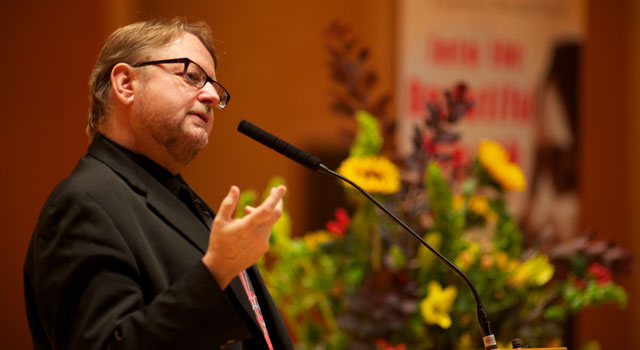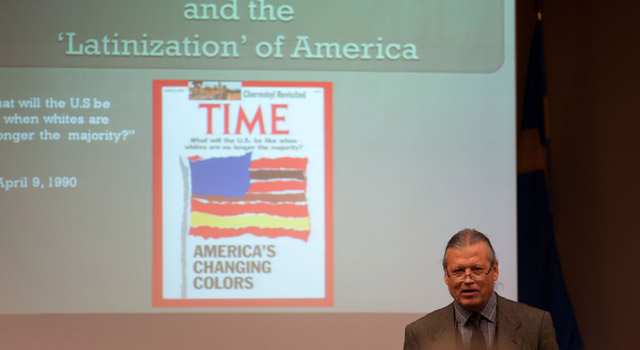Page 8 • (131 results in 0.03 seconds)
-

question what everyone thinks is perfectly normal in the present. It should not surprise, then, that the ancient Hebrew story of the Exodus—of people experiencing liberation from an oppressive society—has sparked reform movements for hundreds of years: the movements to abolish slavery; to end child labor; to give women access to land, vote, and self-determination; to secure a living wage and decent life for farm workers; to free sexual minorities from dehumanizing stereotypes and discrimination. (Photo
-
linguistic and familial capital. Residential Life worked with the Diversity Center, student groups such as ‘the collective’, and individual residents to listen to feedback about sense of belonging of Students of Color in the Residence Halls. A common narrative that emerged was the need for affinity space. A huge part of the value added of spaces such as the Diversity Center or the Students of Color retreat, and now the SOC floor, is that these are places where Students of Color, who are nearly always the
-
stimulating, creative and synergistic conversations with others representing diverse values, beliefs, and perspectives. a. Graduates will represent a variety of diverse backgrounds. We have established the following benchmarks in three of the above areas: 30% students of color 15% men 5% sexual minorities While tracking the above benchmarks, we will also continue to promote a program that has diversity in the other ADDRESSING areas including Age, Disability, Spirituality, and National
-
, Gloria Anzaldua, Malcolm X, Aldo Leopold, Vine Deloria Jr., and Angela Davis. In addition to including more figures in the canon of American philosophy, this opening up of the tradition opens up philosophy itself. Women and minorities can be seen as philosophers. People primarily seen as activists can be seen as doing philosophy. The daily and personal matters in one’s life (family, sexuality, sexual identity) take up new significance as they are situated in the centuries long conversation that is
-
Ph.D. programs and to make Caltech’s programs more visible and accessible to students not traditionally exposed to Caltech. The program is extended, but not limited, to underrepresented minorities, women, first-generation college students, geographically underrepresented students, educationally and financially disadvantaged students, and students with disabilities. Eligibility: Students must be current sophomores through non-graduating seniors and must be U.S. citizens, U.S. permanent residents, or
-
life sciences or other STEM fields is eligible to apply for the SPUR program. You should be in your freshman, sophomore or junior year at the time of application and should be interested in exploring careers in research and graduate school opportunities. You are encouraged to apply if you attend an institution that does not have substantial research opportunities or are underrepresented in the biological sciences. This includes underrepresented minorities, first-generation college students
-

Center left such a positive impression on him that he knew he had to be a Lute. Throughout his student career, Lucas spent a lot of his time working on projects for the Diversity Center. He particularly remembers working on the Tunnel of Oppression, a program that led students through an exhibition where scenes of violence and discrimination against minorities were acted out to get people to understand the struggles people of those identities deal with. “You go through this dark space, and it can be
-
filmmakers about southern Mediterranean landscapes.About Professor Aomar Boum A historical anthropologist and member of the Academy of the Kingdom of Morocco, Aomar Boum is Professor and Maurice Amado Chair in Sephardic Studies in the Department of Anthropology, Department of History and Department of Near Eastern Languages and Cultures at the University of California, Los Angeles. Co-founder and co-editor of Tamazgha Studies Journal, Boum is interested in the place of religious and ethnic minorities
-

. According to Zink, the program helped ease some of the awkwardness of meeting new people. “I liked reading a book with everyone because it gave you something to talk about.” Read Previous Government scientist shares passion for empowering women and minorities Read Next Lutheran Studies conference examines the Lutheran perspective on political life COMMENTS*Note: All comments are moderated If the comments don't appear for you, you might have ad blocker enabled or are currently browsing in a "private
-

browning of America,” detailing the dueling views surrounding the influx of new immigrants. His intention was not to offer a solution, but rather expand the public understanding of its complexity. In 2012, more than 50 percent of American births were minorities, in an obvious irony, rendering the term less apt. Of course, that figure was comprised of no single minority, but it still highlighted a trend that is irrefutable, no matter where one stands on the issue. Foley, in large part, intended to prove
Do you have any feedback for us? If so, feel free to use our Feedback Form.


